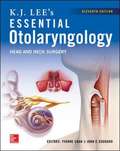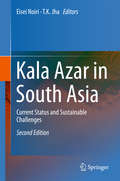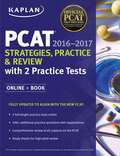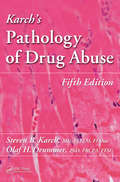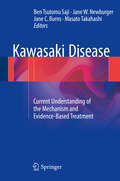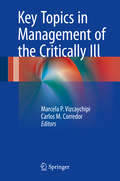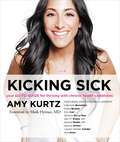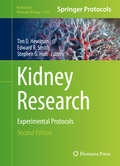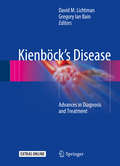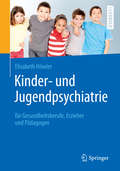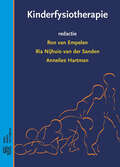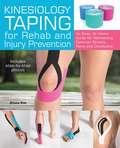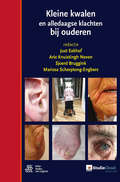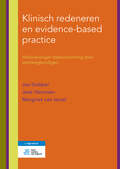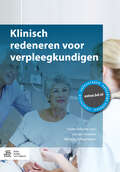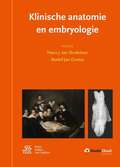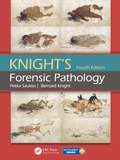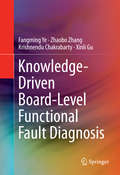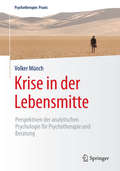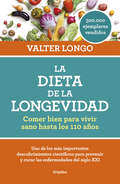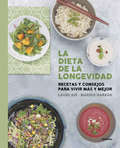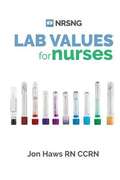- Table View
- List View
K. J. Lee's Essential Otolaryngology: Head and Neck Surgery
by K. J. Lee Yvonne Chan John G. GoddardThe leading guide in otolaryngology - invaluable for board review or as a clinical refresher For more than four decades,K. J. Lee''s Essential Otolaryngology: Head and Neck Surgery has been the premier national and international guide to otolaryngology. The eleventh edition of this classic reference has been thoroughly updated to bring you up to speed with today''s practice of otolaryngology. This concise, easy-to-follow book presents the latest clinical information to help you treat the wide range of conditions involving the head and neck or prep for board review. It is organized to allow for quick clinical recall and high yield review of the field''s must-know information.
Kala Azar in South Asia
by E. Noiri T. K. JhaVisceral leishmaniasis (VL), (also known as black fever or Kala-azar) is a life-threatening disease first reported from the Indian subcontinent. VL ranks as the world's second largest parasitic disease killer and is a neglected tropical disease. Most of those infected by this life-threatening disease are uneducated daily wagers working to support their families, and vectors easily disseminate the disease to their neighbors. Owing to recent involvement of stakeholders, the number of patients is decreasing, but eradication remains a distant goal. This second edition presents latest reports of visceral Leishmaniasis by specialists working at the forefront of the endemic areas in Indian subcontinent. It also introduces vaccine development and inhibitors to Trypanosomatidae; some of them describing feasibility studies in visceral Leishmaniasis for the first time. Recent progress of the Science and Technology Research Partnership for Sustainable Development (SATREPS) is also reviewed and the contents share this collaborative research from the forefront of endemic sites in Bangladesh. Widely covering basic, clinical, epidemiological and entomological aspects, this volume will be of great interest to dedicated researchers interested inLeishmaniasis and to experts of NTDs in global health. There is a tide in the affairs of men. Which, taken at the flood, leads on to fortu≠ Omitted, all the voyage of disease control is bound in shallows and in miseries. ~modified from Shakespeare ~
Kaplan PCAT 2016-2017 Strategies, Practice, and Review with 2 Practice Tests: Online + Book
by KaplanKaplan Test Prep is the only Official Provider of PCAT Prep, as endorsed by the American Association of Colleges of Pharmacy (AACP).Are you ready for the new PCAT? Be prepared with Kaplan's guide to the new test. Fully updated for the 2016-2017 changes to the PCAT, Kaplan's PCAT 2016-2017 Strategies, Practice, and Review includes all the content and strategies you need to get the PCAT results you want.With this edition you get:* 2 full-length, realistic practice tests online that provide you with scores and percentiles* A guide to the current PCAT Blueprint to show you exactly what to expect on Test Day* Comprehensive review of all the content covered on the PCAT: Writing, Biology, General Chemistry, Organic Chemistry, Biochemistry, Critical Reading, and Quantitative Reasoning* Additional practice questions for every subject, all with detailed answers and explanations* Kaplan's proven strategies for Test Day successWith Kaplan's PCAT 2016-2017 Strategies, Practice, and Review, you will earn a higher score on the PCAT--guaranteed.Kaplan also offers complete PCAT preparation options, including self-paced programs, live classes, and private tutoring.
Karch's Pathology of Drug Abuse
by Steven B. Karch MD Olaf DrummerWritten in the same accessible manner as previous editions, the fifth edition of Karch‘s Pathology of Drug Abuse is an essential guide to the pathology, toxicology, and pharmacology of commonly abused drugs. The book focuses on the investigation of drug-related deaths, practical approaches to the detection of drug abuse, and discussions of medical
Kasey’s River Song: Spinnig Dreams In Gold Rush Alaska
by Lewis NormaThirteen-year-old Kathleen Camille (Kasey) Mackenzie faces challenges in Alaska that will require all the strength and courage she can muster. She is forced to struggle with everything from a dress-stealing bear to a killer storm. The unthinkable happens: the death of her beloved father in a mining accident. Her mother had died two years earlier. Now she's alone in Alaska, but only until her grandmother comes to rescue her--whether she wants rescuing or not. Though mature beyond her years, Kasey is far from perfect. She can't quite control a wide stubborn streak and alienates two of the people she loves most. Her strong will might help find everything she longs for--or it could be her undoing.
Kawasaki Disease
by Ben Tsutomu Saji Jane W. Newburger Jane C. Burns Masato TakahashiThis book provides themost up-to-date information on the clinical research into and medical managementof Kawasaki Disease, and opens the door for new pathological insights. Itsnearly 50 sections cover basic research, genetic backgrounds, bacterial and biological evidence, and medical treatment with intravenous immunoglobulin,steroids, and recent anti-cytokine approaches. It offers an invaluable resourcefor general pediatricians, pediatric and adult cardiologists, pediatric cardiacsurgeons, infectious disease specialists, pediatric rheumatologists,epidemiologists, and basic researchers in these disciplines.
Kevin Guest House (Images of Modern America)
by Gerald L. Halligan Denis GarveyWhile unknown to many living in western New York, the Kevin Guest House has served thousands of critically ill individuals and their families for over 40 years. Quietly nestled within the expanding Buffalo Niagara Medical Campus of Buffalo, New York, the demand for the facility continues to increase. The opening chapter is a testimony to the Speyser-Beer family, who originally owned the property. The second and third chapters memorialize the founders of the Kevin Guest House, the Garvey family of Sharon, Pennsylvania. The remaining chapters provide a virtual tour of the grounds and building expansions of 2016.
Key Topics in Management of the Critically Ill
by Marcela P. Vizcaychipi Carlos M. CorredorThis book is designed to assist clinicians who are new to intensive care by providing information on a range of important and novel topics of relevance in the day-to-day management of critically ill patients. Guidance is given on the appropriate response to various emergencies and circumstances, including stroke, acute liver failure, severe burns, extreme pain, and delirium. The role of simulation training in the intensive care unit is discussed, and detailed attention is devoted to the application of modern techniques for the assessment of vital organs in the critical care setting, such as echocardiography and lung ultrasound. An individual chapter focuses on regional anesthesia in intensive care, and in addition the book addresses subjects and issues that are frequently neglected. Examples include transfer of the critically ill patient, the role of forgotten electrolytes such as magnesium, the use of non-coumarin anticoagulants, and neuropsychological rehabilitation. The book will have broad appeal, including for general intensivists, anesthetists, acute medicine physicians, and medical students attached to acute specialties or preparing for exams in intensive care medicine.
Kicking Sick: Your Go-to Guide For Thriving With Chronic Health Conditions
by Amy KurtzHas a chronic health issue taken over your life? More than half of us in the US are struggling with at least one. Amy Kurtz gets it. Starting in her mid-teens, she endured two perfect storms of illness that progressed into her twenties. It earned her the label "the sick chick"--and the shame, fear, isolation, and frustration that comes with it. She's radically improved her health, and today she's helping men and women of all ages live well regardless of their health situation. With honesty, humor, and empathy, Kicking Sick shows you how to jettison despair, tune in to your body and inner wisdom, take charge, and build an effective support circle of medical experts, friends, and family. Kicking Sick also brings you essential advice from Amy's own A-team of experts--the ones crucial to her own turnaround: her personal physician Mark Hyman, gastroenterologist Gerard Mullin, endocrinologist Philip Felig, Crazy Sexy Cancer author Kris Carr, new thought leader Gabby Bernstein, and renowned yogi Elena Brower, plus many real life "glow warriors. "
Kidney Research
by Tim D. Hewitson Edward R. Smith Stephen G. HoltThis second edition expands upon the previous volume with additional emphasis on recent innovation in basic renal research and has a more holistic approach on associated disorders such as complications associated with peritoneal dialysis, ischemic acute kidney injury, the sympathetic nervous system, and vascular calcification. The book is divided into five parts: Part I provides a number of in vitro, in vivo, and ex vivo models of kidney disease and associated complications; Part II looks at recent advances in imaging techniques; Part III covers recent developments in studying metabolism in renal ischemia and reperfusion; Part IV addresses study and measurement of vascular calcification; and Part V explores analytical techniques that are both topical and of widespread relevance to the study of experimental renal disease. Written in the highly successful Methods in Molecular Biology series format, chapters include introductions to their respective topics, lists of the necessary materials and reagents, step-by-step, readily reproducible laboratory protocols, and tips on troubleshooting and avoiding known pitfalls. Authoritative and cutting-edge, Kidney Research: Experimental Protocols, Second Edition is a valuable collection of protocols useful to new and experienced researchers who are interested in the field of Nephrology.
Kienböck’s Disease
by David M. Lichtman Gregory Ian BainCollecting and synthesizing all of the most recent literature on Kienb#65533;ck's disease from around the world, this comprehensive text aims to provide a more dynamic, nuanced treatment algorithm for this enigmatic condition. Part I consolidates the basic science on Kienb#65533;ck's and the lunate, including anatomy, pathology, biomechanics and etiology. Clinical assessment is covered in part II, including radiology, advanced imaging and arthroscopy. The natural history and progression of the condition in children, adults and the elderly is also presented. By far the largest section, part III describes the roles and methods of the various management strategies for Kienb#65533;ck's, from minimally invasive techniques to arthroscopic and arthroplastic procedures. The final chapter draws from all of these concepts, establishes a new algorithm and provides a direction for the future. Written and edited by leaders in the field, and including supplemental video features for select chapters, Kienb#65533;ck's Disease: Advances in Diagnosis and Treatment is a remarkable text that helps unlock this mysterious condition, and will be a valuable resource for hand and orthopedic surgeons, residents and trainees worldwide.
Kinder- und Jugendpsychiatrie für Gesundheitsberufe, Erzieher und Pädagogen
by Elisabeth HöwlerDieses Buch richtet sich an alle Erzieher, Pädagogen, Ergotherapeuten, Logopäden, Physiotherapeuten und Pflegende, die mit Kindern und Jugendlichen mit psychischen Störungen arbeiten. Die erfahrene Autorin beschreibt die häufigsten Krankheitsbilder anhand von zahlreichen Fallbeispielen und gibt für den professionellen Umgang mit den Betroffenen hilfreiche Praxistipps. So lernen Sie, wie Sie bei Ihrer therapeutischen und pädagogischen Arbeit u.a. die psychische Gesundheit von Kindern und Jugendlichen fördern können.
Kinderfysiotherapie
by R. Van Empelen Ria Nijhuis-Van Der Sanden Annelies HartmanIn deze druk wordt een beeld gegeven van vernieuwingen in visie, werkwijze en inzichten in de Nederlandse kinderfysiotherapie. Zowel wetenschappers als praktisch georiënteerde kinderfysiotherapeuten en andere bij kinderen betrokken behandelaars belichten hun invalshoeken op de diverse indicatiegebieden. In het boek wordt achtereenvolgens beschreven hoe het methodisch systematisch handelen, het gebruik van de International Classification of Functioning, Disability and Health for Children and Youth (ICF-CY) als classificatiesysteem en het Hypothesis-Oriented Algorithm for Clinicians II (HOAC-II) als model voor klinisch redeneren verhelderend werken en de transparantie vergroten. Hierdoor is het boek niet alleen geschikt als studieboek voor de opleiding, maar is het zeker ook onmisbaar voor reeds praktiserende kinderfysiotherapeuten. Daarnaast is het boek waardevol voor kindergeneeskundigen, kinderartsen, (kinder)revalidatieartsen, huisartsen, consultatiebureauartsen, ergotherapeuten, orthopedagogen, logopedisten, psychologen en vele andere professionele hulpverleners in de kinder- en jeugdgezondheidszorg. De redactie was ook deze keer in handen van Ron van Empelen, Ria Nijhuis-van der Sanden en Annelies Hartman.
Kinesiology Taping for Rehab and Injury Prevention: An Easy, At-Home Guide for Overcoming Common Strains, Pains and Conditions
by Aliana KimTHE ULTIMATE DIY TAPING GUIDE OF EVERYDAY INJURIES AND AILMENTS INCLUDES OVER 200 STEP-BY-STEP PHOTOSWidely used by physical therapists, chiropractors and personal trainers, kinesiology tape provides incredible support while simultaneously stretching so your body can perform its normal range of motion. Now you can utilize this amazing material at home. Simply buy a roll at your local drugstore and follow the taping methods described in this book to reduce pain, rehab an injury and get back in the game.Providing clear step-by-step instructions and helpful photos, the author shows how to tape the most common injuries and conditions anywhere on the body:• Neck pain• Frozen shoulder• Bicep strain• Tennis elbow• Wrist sprain• Tight IT band• ACL/MCL sprains• Achilles tendinitis• Ankle sprain• Plantar fasciitis
Kleine kwalen en alledaagse klachten bij ouderen
by Just Eekhof, Arie Knuistingh Neven, Sjoerd Bruggink and Marissa Scherptong-EngbersHuisartsen, maar ook andere professionals die betrokken zijn bij de medische zorg voor ouderen, blijken grote behoefte te hebben aan een praktische aanpak van alledaagse klachten. Daarin voorziet dit boek. Omdat we praktische handvatten bieden voor de aanpak van kleine kwalen maar ook voor de aanpak bij de eerste presentatie van andere niet altijd kleine maar wel veelvoorkomende alledaagse klachten, is de titel aangepast: Kleine kwalen en alledaagse klachten bij ouderen. Kleine kwalen en alledaagse klachten bij ouderen geeft een praktische leidraad voor vijftig alledaagse klachten bij mensen van ongeveer 75 jaar of ouder. Diagnostiek en beleid krijgen een rationele en, zo mogelijk, een wetenschappelijke onderbouwing. De inhoud sluit aan bij de richtlijnen en standaarden van het Nederlands Huisartsen Genootschap (NHG). Elk hoofdstuk begint met kernpunten die de belangrijkste aspecten van de aandoening in een oogopslag bij elkaar zetten. Aan vrijwel ieder hoofdstuk zijn illustraties toegevoegd. Kleine kwalen en alledaagse klachten bij ouderen is bedoeld voor de huisarts (in opleiding), de specialist Ouderengeneeskunde (in opleiding), de praktijkondersteuner en de wijkverpleegkundige. Het boek is ook waardevol andere professionals die betrokken zijn bij de medische zorg voor ouderen en voor medisch studenten. Met veel dank voor hun medewerking aan - dr. Annet Wind, hoofd van de NHG-kaderopleiding Ouderengeneeskunde, en - prof. dr. Wilco Achterberg hoogleraar Institutionele zorg en ouderengeneeskunde beiden werkzaam bij de afdeling Public health en Eerstelijnsgeneeskunde LUMC.
Klinisch redeneren en evidence-based practice: Weloverwogen besluitvorming door verpleegkundigen
by Jos Dobber José Harmsen Margriet IerselKlinisch redeneren is een continu denkproces van kritisch denken. Dit boek ontrafelt het denkproces dat de hbo-verpleegkundige uitvoert en presenteert dit proces in vier overzichtelijke besluiten die verpleegkundigen tijdens hun werk voortdurend moeten nemen. Het boek bevat vele digitale extra's en hulpmiddelen, zoals kennisclips, links naar achtergrondinformatie en casusvideo's. Naast het boek en de digitale omgeving voor studenten bevat het boek ook materiaal specifiek voor docenten, ontwikkeld vanuit het 4C/ID ontwerp-model.
Klinisch redeneren voor verpleegkundigen
by Lia Van Straalen Marieke SchuurmansKlinisch redeneren is de basisvaardigheid van iedere verpleegkundige. Door klinisch redeneren kun je goede besluiten nemen en in de beroepspraktijk verantwoordelijkheid dragen. De beroepspraktijk van verpleegkundigen verandert in snel tempo. Zorg wordt complexer. Door klinisch redeneervaardigheden continu te blijven ontwikkelen kan de moderne verpleegkundige deze veranderingen aan. Dit boek legt uit waarom het belangrijk is dat zowel studenten als verpleegkundigen aandacht besteden aan klinisch redeneren. Klinisch redeneren voor verpleegkundigen beschrijft hoe je klinisch redeneren kan leren en toepassen en hoe je daarbij gebruik maakt van kennis, ervaring en reflectie. Klinisch redeneren voor verpleegkundigen laat ook zien hoe je van gegevens tot een probleemstelling en interventies komt en waarom standaard diagnoses niet altijd passen. Als laatste gaat klinisch redeneren voor verpleegkundigen in op de relatie tussen indirecte zorg en klinisch redeneren. Ook het belang van continue professionele ontwikkeling voor het klinisch redeneren komt aan de orde. De bijbehorende website biedt oefenmateriaal afkomstig uit de praktijk, met onder andere casu#65533;stiek met oefenvragen. Het biedt je een realistische blik op de praktijk van de verpleegkunde en het is waardevol oefenmateriaal ter voorbereiding op stages of om je te verdiepen in een bepaalde problematiek. Het boek klinisch redeneren voor verpleegkundigen is bestemd voor verpleegkundigen in opleiding. Daarnaast is het voor verpleegkundigen een houvast in de dagelijkse praktijk. Klinisch redeneren voor verpleegkundigen is geschreven door een team van docenten, wetenschappers en praktiserende verpleegkundigen uit verschillende velden.
Klinische anatomie en embryologie
by Hans J. ten Donkelaar Roelof-Jan OostraAnatomie en embryologie nemen een centrale plaats in binnen het curriculum geneeskunde. Om inzicht te krijgen in afwijkingen en ziekten van het lichaam is kennis van anatomie en embryologie onmisbaar. Klinische anatomie en embryologie onderscheidt zich door de ruime aandacht voor toepassing van de anatomie, inclusief de neuroanatomie, in de kliniek en door het veelvuldig gebruik van beeldvormende technieken zoals computertomografie (CT) en nucleaire magnetische resonantie (MRI). De ontwikkelingen op het terrein van de embryologie die uitgebreid in het boek aan de orde komen, geven de lezer meer inzicht in de anatomie en de pathologie.De vierde, herziene druk van Klinische anatomie en embryologie is ingrijpend gewijzigd. Verschillende nieuwe medewerkers werden aangetrokken om een aantal hoofdstukken te herzien. De oorspronkelijke hoofdstukken 1 (Inleiding tot de anatomie) en 2 (De orgaanstelsels van het lichaam) zijn tot één, kleiner hoofdstuk 1 (Algemene anatomie) omgewerkt. Ook het hoofdstuk Algemene embryologie (nu hoofdstuk 2) is ingrijpend gewijzigd. De speciële hoofdstukken 3 tot en met 10 zijn in grote lijnen gehandhaafd. Een belangrijke verbetering in de vierde druk is de toepassing van kleur, niet alleen in foto's, maar ook in de embryologie en de topografische anatomie. De spiertabellen zijn verder uitgewerkt en voorzien van nieuwe illustraties.De vierde druk is opgenomen in StudieCloud, een nieuwe online-leeromgeving met bondige samenvattingen van de verschillende hoofdstukken, interactieve toetsvragen, informatieve deeplinks voor verrijkingen op deelgebieden en een onlineversie van het boek.Klinische anatomie en embryologie is een compleet studieboek voor studenten geneeskunde, tandheelkunde, biomedische wetenschappen, gezondheidswetenschappen en fysiotherapie. Het sluit uitstekend aan bij de nationale ontwikkelingen in het onderwijs. Ook is het geschikt als naslagwerk voor de praktiserende arts.
Knight's Forensic Pathology
by Bernard Knight Pekka SaukkoThe fourth edition of Knight's Forensic Pathology continues to be the definitive international resource for those in training and in practice, covering all aspects of the medico-legal autopsy, including the cause and time of death, interpretation of wounds and every other facet of the investigation of a fatality.The contents are intended to lead th
Knowledge-Driven Board-Level Functional Fault Diagnosis
by Krishnendu Chakrabarty Fangming Ye Zhaobo Zhang Xinli GuThis book provides a comprehensive set of characterization, prediction, optimization, evaluation, and evolution techniques for a diagnosis system for fault isolation in large electronic systems. Readers with a background in electronics design or system engineering can use this book as a reference to derive insightful knowledge from data analysis and use this knowledge as guidance for designing reasoning-based diagnosis systems. Moreover, readers with a background in statistics or data analytics can use this book as a practical case study for adapting data mining and machine learning techniques to electronic system design and diagnosis. This book identifies the key challenges in reasoning-based, board-level diagnosis system design and presents the solutions and corresponding results that have emerged from leading-edge research in this domain. It covers topics ranging from highly accurate fault isolation, adaptive fault isolation, diagnosis-system robustness assessment, to system performance analysis and evaluation, knowledge discovery and knowledge transfer. With its emphasis on the above topics, the book provides an in-depth and broad view of reasoning-based fault diagnosis system design. * Explains and applies optimized techniques from the machine-learning domain to solve the fault diagnosis problem in the realm of electronic system design and manufacturing; * Demonstrates techniques based on industrial data and feedback from an actual manufacturing li≠ * Discusses practical problems, including diagnosis accuracy, diagnosis time cost, evaluation of diagnosis system, handling of missing syndromes in diagnosis, and need for fast diagnosis-system development.
Koenig and Schultz's Disaster Medicine
by Kristi L. Koenig Carl H. Schultz Koenig, Kristi L. and Schultz, Carl H.As societies become more complex and interconnected, the global risk for catastrophic disasters is increasing. Demand for expertise to mitigate the human suffering and damage these events cause is also high. A new field of disaster medicine is emerging, offering innovative approaches to optimize disaster management. Much of the information needed to create the foundation for this growing specialty is not objectively described or is scattered among multiple different sources. Now, for the first time, a coherent and comprehensive collection of scientific observations and evidence-based recommendations with expert contributors from around the globe is available in Koenig and Schultz's Disaster Medicine: Comprehensive Principles and Practices. This definitive work on disaster medicine identifies essential subject matter, clarifies nomenclature, and outlines necessary areas of proficiency for healthcare professionals handling mass casualty crises. It also describes in-depth strategies for the rapid diagnosis and treatment of victims suffering from blast injuries or exposure to chemical, biological, and radiological agents.
Krise in der Lebensmitte
by Volker MünchIn diesem Buch werden die Chancen und Risiken der vielbesprochenen „midlife-crisis“ thematisiert – Therapeuten und Berater erhalten Anregungen für ihre Arbeit und Selbstreflektion. Die unterschiedlichen Formen, die die Durchbrüche des Unbewussten im Alltag von Männern und Frauen annehmen, werden auch anhand klinischer Beispiele genauer untersucht. Wie kann die Jung‘sche Sichtweise dabei helfen, die Hinweise des Unbewussten in kreativer, geduldiger, oft überraschender Weise zu entschlüsseln, zu integrieren und zu nutzen? Diesen Fragen geht der Autor in therapeutischer, persönlicher und gesellschaftlicher Hinsicht nach. Geschrieben für Psychologische Psychotherapeuten, Ärztliche Psychotherapeuten, Berater, Seelsorger. Interessierte Laien können mitlesen.Aus dem InhaltWas ist eine „midlife-crisis“? – Überblick über ein facettenreiches Phänomen – Die Vorstellung des „Puer“ und des „Senex“ – Der Wandel und das „neue Leben“ – Krise als Schwellensituation – Eros und Wandlung – Die Psychologie C.G. Jungs -– Die Therapie der midlife-crisis – Liebe, Körper und Sex und die Lebensmitte – Die Krise unserer Zeit und die Krise der Lebensmitte – Generationalität – Kultur und Lebensmitte – Individuelle Wege zur Lebensmitte.Der Autor Dipl.-Psych. Volker Münch, Psychoanalytiker, eigene psychotherapeutische Praxis in München, Dozent am C.G. Jung-Institut München und C.G. Jung-Institut Stuttgart, Lehranalytiker und Supervisor.
La dieta de la longevidad: Comer bien para vivir sano hasta los 110 años
by Valter LongoEn La dieta de la longevidad Valter Longo, el «gurú de la longevidad», recoge uno de los más importantes descubrimientos científicos en el campo de la alimentación: la clave para prevenir y curar las enfermedades más comunes del siglo XXI. Basado en un revolucionario estudio de la dieta de la población más longeva del mundo. Tienes ante ti uno de los descubrimientos científicos más revolucionarios en el campo del envejecimiento: cómo prevenir y curar las enfermedades más comunes del s. XXI a través de la alimentación. Revolucionario porque se ha demostrado que la capacidad de mantenernos jóvenes e incluso la de regenerarnos, está dentro de nosotros, en nuestro cuerpo, y que podemos reprogramar nuestras células y reducir los factores de riesgo de enfermedades como la diabetes, patologías cardiovasculares e autoinmunes, enfermedades neurodegenerativas como el Alzheimer o el cáncer con un régimen alimentario basado en los hábitos de la población más longeva del mundo. Con su dieta casi vegana, de dos o tres comidas al día repartidas entre 12 horas, y varios ayunos al año, además de otros muchos consejos y recetas, podrás mantener o recuperar un cuerpo sano hasta superados los 100 años.
La dieta de la longevidad: Recetas y consejos para vivir más y mejor
by Dra. Kathy Bonan Laure KiéUn libro ilustrado de recetas, menús y consejos cotidianos basados en el método Okinawa, la dieta para vivir más y mejor. Okinawa es una pequeña isla al sur de Japón cuyos habitantes son los seres humanos más longevos del planeta. Sus ancianos tienen las tasas más bajas del mundo en enfermedades ligadas al envejecimiento, como la hipertensión arterial, la osteoporosis, la diabetes o el cáncer. ¿Cuál es su secreto? El método Okinawa propone una dieta sana y equilibrada, baja en calorías y rica en nutrientes protectores que, combinada con un actividad física regular, un entorno bajo en estrés, una vida espiritual rica y un vínculo social fuerte, puede aumentar nuestra esperanza de vida. Los menús y recetas de este libro, basados en la tradición japonesa, permiten poner en práctica el método Okinawa con productos que podemos encontrar en nuestro país. Además integran matices de la gastronomía francesa, que aportan originalidad y creatividad a cada uno de los platos.
Lab Values: 63 Must Know Labs for Nurses
by Jon Haws Sandra Haws#1 Best Selling Nursing Reference Book on Amazon Want to study better, but don't have the time? This book outlines the 63 MUST KNOW lab values for nurses to help them prepare for the NCLEX ® and care for patients on the floor. Whether you are a student nurse or an experience this book contains the information you need to know to provide superior patient care. <p><p> Charts + Brief Descriptions = Fast Learning <p> The book includes a brief introduction followed by charts including 63 important lab values with their units, normal ranges, and abbreviations. The charts are followed by a brief description for each individual value including: indications, what would cause abnormal values, and a description of the lab value itself. <p> Download :: Lab Values: 63 Must Know Lab Values for Nurses <p>Lab Values contains an easy to read and follow catalog of the most essential labs for nurses.<br> Color graphics and charts<br> Normal lab values and common abbreviations<br> Descriptions of each value<br> Correct filling order for specimen tubes<p> Stop wasting time on you studies and start acing exams and spending more time actually caring for patients. With this ebook for kindle or kindle app you will learn the 63 most important labs for nurses and the NCLEX - RN ®. This is the perfect pocket guide and makes lab value interpretation easy. **FREE** Gift included (4 Page PDF download and lab charts).<p> NCLEX, NCLEX-RN, and NCLEX-PN are registered trademarks of the National Council of State Boards of Nursing, Inc. They hold no affiliation with this product.
